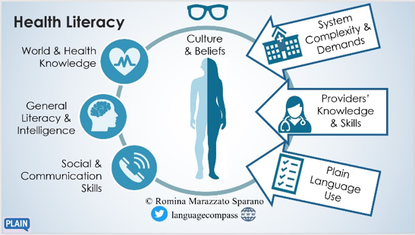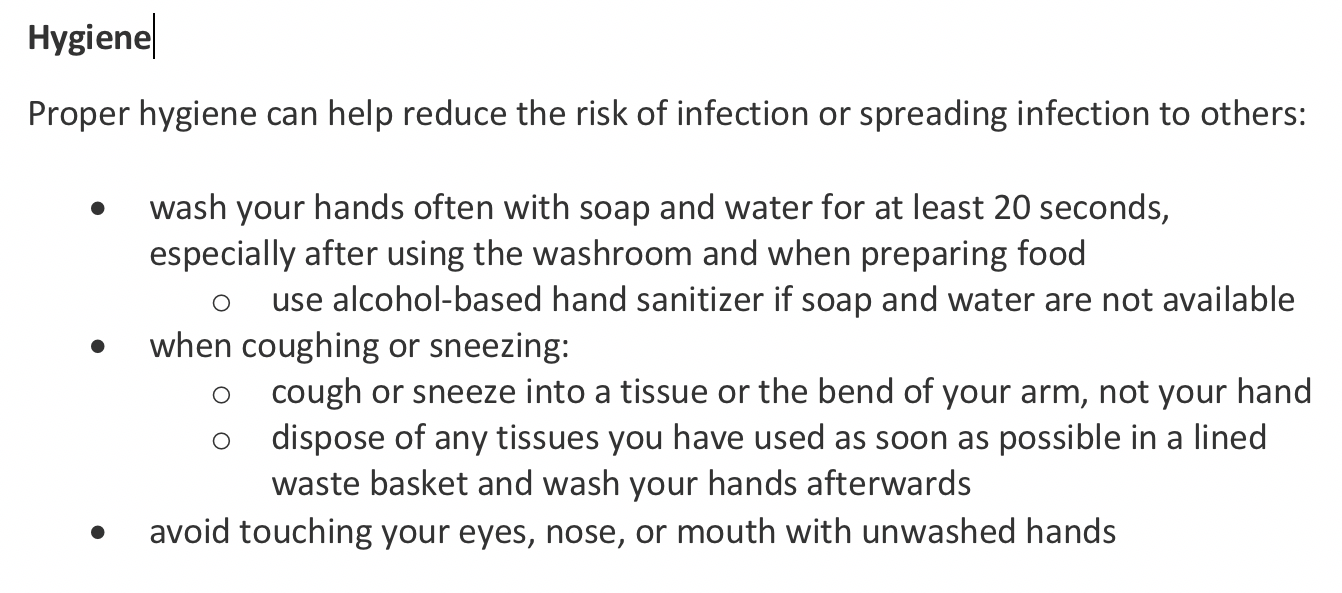|
As the Academies grew, now including English, French and Spanish options, we kept our commitment to be like plain language itself.
We moved to Moodle to help make learning easier and better. To join a course you need to: 1. go to plainlanguageacademy.moodlecloud.com, 2. create your account 3. choose and register for your courses. You will have access the day the course starts. If you have any questions or issues, contact [email protected] Choose from our three Core courses on Basics, Audiences, and Writing and Editing. Or, select an Advanced course suited to your current or upcoming needs. Topics include creating e-content, legal editing, technical editing, health literacy, design, feedback testing, science, and strategic planning, and projects. More courses are coming. We are so excited about our new platform, we just want everyone else to share the experience. Visit our Courses page to find out more, check dates, and use the registration links.
0 Comments
Plain Language Academy instructors take their skills to the PLAIN Board
The PlainLanguageAcademy.com (PLA) is proud to have two of its instructors join the Plain Language Association International’s Board. Nicole Watkins Campbell, Watkins Campbell Communications, is their new Treasurer. Romina Marazzato Sparano, Language Compass , joins as a Board Member. “I am excited about working with the PLAIN board to provide a place where plain language practitioners and educators can share ideas and broaden the use of plain language,”said Nicole, who teaches Editing for Plainer Legal Writing for the Academy. “As a Board member, I am ready to help wherever I’m needed,” said Romina, who teaches Plain Language 2.0 and Health Literacy for the Academy. “My interests in serving the members include updating our directory with dynamic features for clients to find members and for members to share with each other. I’m keen to explore how PLAIN can support certification pathways for practitioners and continue the work for transparency. Also, as an educator, I’m very excited about linking members with resources to learn new skills and polish existing ones in order to bring readers information they can easily use to ‘better themselves, their communities, and their environment!’” “We have the plain language ISO standards coming to lead us into the future, virtual conferences opening the doors to more participants, and new services being added for PLAIN members,” said Kate Harrison Whiteside, PLA founder. “As a co-creator and former board member of PLAIN, I am looking forward to the developments Nicole, Romina and the Board introduce. Everyone will benefit from their input, including their students at the Academy.” PLAIN is an international organization connecting clear communication practitioners and advocates from over 30 countries. Their next global conference (virtual) is in May 2021. Connect with the PLA on: PlainLanguageAcademies.com www.linkedin.com/company/plain-language-academy Nicole Watkins Campbell, Watkins Campbell Communications Romina Marazzato Sparano, Language Compass by Nicole Watkins Campbell Editing for Plainer Legal Writing Instructor The best way to ensure your document meets readers’ needs is to test it with the audience. Even testing that is quick and cheap can give you useful information about how to improve your document. What is a test? A test can be as simple as asking a colleague or a citizen to answer one question about your text or as complicated as inviting 30 people to read your document and answer questions. Almost any test will help you make the writing better. And any test with a member of your audience will get you closer to writing that works for your readers. When should you test? Start testing as soon as you have enough material to test. Don’t wait until your document is complete unless it’s a short email. Make corrections based on feedback, and test again, if you can. The best practice is to test a couple of times, and more if the text is important and could be difficult for your readers. How should you test? Several methods will help you improve your document.
Record your results in some way:
Who should you recruit?
Testing documents internally with co-workers while you’re still writing is highly useful. You can then test a final draft with someone from outside your team. Your co-workers will likely read about as well as you do and have the same technical understanding, so you will want other perspectives on the complexity of the language and the topic. Don’t test with people who know the information in the document or people who helped you get to this point in creating this document. They will know too much about your subject area to notice what’s missing or out of place. Readability measures Your word processor or a website like Hemingway Editor will offer quick readability tests. But these long-established ways of describing how readable a text is actually don’t mean much. They were originally created to measure children’s reading skills, not documents for adults. The software counts syllables (to represent complexity in language), words and paragraphs (to represent complexity in expression) to roughly estimate reading difficulty. The resulting number claims to reflect the number of years of education a person needs to read the text. Readability measures fail in three main ways:
If your text readability score from Microsoft Word or Hemingway Editor is gets a Grade 10 or higher, you probably need to edit for clarity: many people don’t read at this level. If you test again, you will be able to see if your changes made your sentences easier to read, but you should rely on other methods to make sure your text is clear. Try setting up a simple test of a bit of writing this week. You will learn something surprising or pleasing. But you will learn something. Nicole Watkins Campbell with Sarah Slabbert and Nadja Green, Plain Language Institute, SA We are just finishing up the first offering of our Advanced course on strategic planning for plain language. It is also the first course offered on the Academy's new Moodle platform. Implementing Plain Language in an organization is almost invariably a challenge and there is not a one-size-fits-all solution. Most of our students have practical experience of this challenge and they therefore expect the course to offer solutions that they can apply. Moodle enables us to listen to our students in one-on-one conversations and to understand their unique needs. Moodle also makes it easy for us to continuously improve our course and add new learnings as we go along. We enjoyed working with Moodle and students are giving us positive feedback. Sarah and Nadja. NextA5 Implementing Plain Language as a Strategic Priority starts August 16. Academy reflects plain language principlesThe Academy strives to be like plain language itself.
1. go to plainlanguageacademy.moodlecloud.com, 2. create your account 3. choose and register for your courses. You will have access the day the course starts. If you have any questions or issues, contact [email protected] Choose from our three Core courses on Basics, Audiences, and Writing and Editing. Or, select an Advanced course suited to your current or upcoming needs. Topics include creating e-content, legal editing, health literacy, design, testing, science, and strategic planning. More are coming. We are so excited about our new platform, we just want everyone else to share the experience. Plain Language Academies (PLA) expandsNew courses, languages, instructors, opportunitiesPlain language knows no boundaries: so we are expanding ours to offer plain language courses in French, Spanish, and in South Africa. We want plain language to be everywhere because we know it is for everyone. 'New' is a key word for today's personal and work lives. The Plain Language Academies' team is creating more ways to share our skills and meet your growing needs for clear communication. Take advantage of current Core and Advanced courses at last year's fees. We encourage you to explore Advanced courses that tackle specific topics like clear health, legal, science, strategic planning, and online communication. New courses are coming. keep visiting us PlainLanguageAcademy.com for details and sign up for our newsletter. We are looking forward to meeting you online, sharing skills, and learning about your interests. Courses to take you forward Our courses are designed to keep your clear communication skill development focused on the future. New fees are planned for future courses. Here are brief profiles of a few courses you can consider. Clear Design Practices with Flora Gordon, (you can still sign up), explores the important role design plays in our communications and ways you can make design enhance your messages. Plain Language 2.0 and Health Literacy, never been more important. Romina Marazzato Sparano shares her expertise. Available in English (now) and Spanish (soon). Everyone is online and we need to be clear and meet their needs. Kate Harrison Whiteside brings her years of plain language use online experience to you in Creating Clear E-content. New: Implementing Plain Language as a Strategic Priority with Sarah Slabbert and Nadja Green, Plain Language Institute, South Africa. The focus of plain language is often on specific documents or pieces of communication. Implementing plain language in a systematic manner in an organization is a different challenge for executives, compliance officers, communication managers, or customer relations. This course will empower you to make your organization truly customer- or citizen-centred. See Courses for current course registration links Three good reasons to work on legal editing by Nicole Watkins Campbell We have three good reasons to work on your legal writing and editing skills this year. 1. New year–new you. New learning ALWAYS refreshes. 2. It will keep your mind busy during a potentially slow period. Learning ways to sharpen your writing or editing skills is always useful, especially if you have time to devote to deep study, like during a slow period at work. 3. It will give you little breaks during a potentially busy period. You can study at your own pace over about six weeks, even though it’s a four-week course. You can chat with other students or with me, your instructor, on issues that challenge you. In fact, I’ll help you on a thorny document, if you’d like. Learning is good for your brain and enhancing skills is good for your career. Join me for A2 Editing for Plainer Legal Writing Help us plan your future learning
The PLA team is so committed to the future of plain language, of enhanced learning, and of building connections. We are always looking for ways to improve plain language practices, skills, and projects. We keep broadening our program to meet new needs we are all facing. If you would like to see a new course, offer a new course, or access our coaching and consulting services, please get in touch. Contact [email protected]. English, Français, Español and South African CollaborationsAcademy becomes Academies 2021 will bring a new vision. More options. The PlainLanguageAcademy.com is now Plain Language Academies. We are adding new courses and new languages and new collaborations to meet your needs to learn in more ways. More options, greater access Our language options will soon include French (Français) and Spanish (Español) courses, with a new collaboration in South Africa focused on plain language strategy skills. We are growing so you can expand your learning and your horizons. More Advanced courses to increase your options We are here to help you build new skills for your plain language portfolio and future. Topics include online content, health, legal, and the science of plain language. Coming soon: strategic planning and document assessment. Advanced courses to meet tomorrow's challenges Register now for our fall offerings of Creating Clear E-content, Editing for Plainer Legal Writing, and Plain Language 2.0 and Health Literacy. Cheryl Stephens is back with Science Supports Plain Language. Flora Gordon is delivering Clear Design Practices. Core courses are open now for registration. Visit our Calendar for dates and links. New collaborations Académie du langage clair et simple Meet our Français (French) team Chantale Audet et Amélie Bourret, d'Autrement dit, une entreprise québécoise qui offre des services en langage clair et simple. Bienvenue à l'Académie du langage clair et simple Chantale Audet et Amélie Bourret, d’Autrement dit, ont développé un cours d’initiation au langage clairet simple, en français. Ce cours, Introduction au langage clair et simple, sera proposé à partir dudébut de l’année 2021. Chantale Audet and Amélie Bourret, d'Autrement dit, a Quebec consulting firm that offers services in plain language, have developed an introductory French plain language course. The course, Introduction to Plain Language, will be offered at the beginning of 2021. Visit plainlanguageacademy.com/academiefrancais Academia de lenguaje claro Meet our Claro (Spanish) Team Romina Marazzato Sparano and team are working hard developing a set of courses to get the Academia de Lenguaje Claro ready for you in 2021. Bienvenidos a la Academia de Lenguaje Claro Romina Marazzato Sparano, languagecompass.com, (California) is teaming up with the best instructors in the Spanish-speaking world to offer Spanish plain language courses. They include introductory courses about clear writing and specialized courses on legal, corporate, health literacy, and academic writing. Academia launches in 2021. Romina Marazzato Sparano, languagecompass.com (California) ha convocado a los mejores instructores del mundo hispanohablante para ofrecer formación en lenguaje claro en español, con cursos introductorios sobre la buena redacción y cursos especializados en redacción legal, corporativa,médica y académica. Se abrirá la inscripción a principios de 2021. Discover what's happening at plainlanguageacademy.com/lenguajeclaro Implementing Plain Language as a Strategic Priority Meet our South African team South Africa's Sarah Slabbert and Nadja Green of the Plain Language Institute are developing the new Implementing Plain Language as a Strategic Priority Advanced course (registration coming this fall; course in 2021). They will also be offering two of the existing PLA courses via their website. Plain language actions often focus on specific documents or pieces of communication. Implementing plain language in a systematic manner in an organization is, however, a different challenge for executives, compliance officers and communication managers. The new Advanced course will empower you to make your organization truly customer- or citizen-centred. Interested? Let us know at [email protected]. Stay Connected
plainlanguageacademy.com Facebook: facebook.com/plainlanguageacademy Twitter hashtag: #PlainLanguageAcademy Email: [email protected]. We'll have a great fall learning together. Kate and team [email protected] by Shelley Egan, Egan Editing  Shelley Egan is an editor and proofreader who specializes in fiction and copy editing. Before starting her own business, eganediting.com, she edited Hansard transcripts and taught ESL. The COVID-19 virus has caused global upheaval and uncertainty. Misinformation is widespread, and messaging changes as more is learned about the virus. For accurate and timely information, Canadians have been urged to consult the Government of Canada (GC) website, as well as provincial websites.1 The Canada.ca Content Style Guide requires the use of plain language for GC web content and notes, “Using plain language … makes critical information accessible and readable for everyone.”2 The reference to “everyone” is interesting because almost half of Canadians have “literacy challenges.”3 Web content assessment As an editor and former ESL instructor, I wondered about the accessibility of the GC text. The sample I examined appears on a COVID-19 FAQ page, under “Preventing coronavirus.”4 I used one of many online plain-language checklists to examine the text. Kate Harrison Whiteside (PlainLanguageAcademy.com) notes, “Checklists are important in covering the many components that make a message clear.”
Regarding language, the sample is in active voice, and there is just one idea per paragraph. However, some sentences have more than 20 words. The vocabulary could be simplified by replacing “dispose of” with “throw away,” “waste basket” with “garbage,” and “avoid touching” with “before you touch,” for example. The writing is formal rather than friendly, and the second person ("you") could be used more often to address the reader directly: “You can help reduce the risk of infection…” and “When you cough or sneeze.…” The sample’s Flesch-Kincaid Grade Level score is at the post-secondary level: 42.2 or “difficult to read.” In terms of organization, the heading “Hygiene” is one of four subheads under the heading “Preventing coronavirus.” The heading is followed by the main purpose, and a bulleted list groups the information, which is all required. However, the structure of the second bullet point —an introductory-phrase stem followed by main clauses in sub-bullets—could confuse. The use of all lower case and the lack of end punctuation also make it difficult to identify sentences. With respect to accessibility, the font size is easy to read, and the white space is ample. The left margin is justified, and the right is ragged. However, black text, rather than grey, would be easier to read. Conclusion My analysis of the GC sample text revealed that many Canadians would have difficulty accessing this important information on COVID-19 because the reading level is too high, despite the Canada.ca Content Style Guide requirement that “content intended for general audiences” should be at “grade 8 or lower.”5 User testing may not have been carried out on the text sample, and the need to post information quickly is understandable. However, user feedback could have resulted in adjustments to the language and to the organization, making it more “accessible and readable for everyone.” Helpful links Health Canada – Coronavirus disease (COVID-19) www.canada.ca/en/public-health/services/diseases/coronavirus-disease-covid-19.html Canada.ca Content Style Guide–Plain Language (from the Treasury Board of Canada Secretariat) www.canada.ca/en/treasury-board-secretariat/services/government-communications/canada-content-style-guide.html#toc6 Notes 1. www.canada.ca/en/public-health/services/diseases/2019-novel-coronavirus-infection.html?&utm (accessed April 14, 2020) 2. www.canada.ca/en/treasury-board-secretariat/services/government-communications /canada-content-style-guide.html (accessed April 8, 2020) 3. www.canada.ca/en/treasury-board-secretariat/services/government-communications /canada-content-style-guide.html (accessed April 1, 2020) 4. www.canada.ca/en/public-health/services/diseases/2019-novel-coronavirus-infection /prevention-risks.html#p(accessed April 8, 2020) 5. /canada-content-style-guide.html (accessed April 15, 2020) We often think content design only applies to the text sections of our website. But, as our language becomes more visual and we, as scanners and writers, want a graphic to partner with text, clarity and readability become even more important. Using Icons Icons were developed to simplify communication, to create a clear graphic that tells the story without the need for words. But, they are still a form of communication, and understanding is required for them to be accessible and usable. They do work better and are more user-friendly when combined with text. The UK's National Health Service (NHS) has done research on icons. Yes, icons can help people understand, navigate and discover, but not all icons are universal. Their user research generated these important results:
Findings from Usertesting.com's Make Your Icons User-Friendly research are interesting. They found icon + text gets the best results. "Our study results: labels vs. no labels In our study, we found that for icons with labels, users were able to correctly predict what would happen when they tapped the icon 88% of the time. For icons without labels, this number dropped to 60%. And for unlabeled icons that are unique to the app, users correctly predicted what would happen when they tapped the icon only 34% of the time." What about links? Links are critical and require special planning around content and graphics. They get your audience to their destination. Click here is out: do not use it. Write text links, alone or within a graphic, that are clear and specific. According to this online article, Why writing links well is so important, they help site visitors find what they want, contribute to SEO, draw in scanners and increase your site's credibility. However, they can also be distracting if not done well. Read the article for tips. It’s important to view content in the big picture, content design. A picture with words can make the world of difference to your audience and your organization. PlainLanguageAcademy.com courses to help you: Clear Design Practices, with Flora Gordon, March 10, 2020 Creating Clear Online Content: start anytime. by Nicole Watkins Campbell, www.watkinscampbell.com
In the 2020s, more and more new information will be created and published online and in print. We will see:
Making your information stand out This information exists in many places online and in printed documents, some well-written and others less so. Good writing serves readers well if it:
The writer's role in clear communication What do you, the writer or editor, know about what your readers need? Where are they when they read your document? Do they need to read twice to understand it and take action? As a writer or editor of legal information, you can help your readers by learning more about them and then making your writing as clear as possible. Learn about legal editing for clarity My Academy course, Editing for Plainer Legal Writing, will help you make your writing more useful and more interesting. And, that will actually make you more trustworthy and likeable. This study of complex language explains how. This course will guide you on how to edit information about the law—about people’s rights and responsibilities—to meet your clients' needs. You will learn to make these types of documents or content clearer for your readers, even if you are not a lawyer. In fact, the course is aimed at non-legal communicators who are tasked with presenting legal information. Join me February 10, 2020 for Editing for Plainer Legal Writing. Reserve your place now. You will sharpen your skills and win client appreciation.  By Romina Marazzato Sparano, LanguageCompass.com Health literacy is defined as the ability to find, understand, and process information to make healthcare decisions. This definition is currently under review. The concern is that success in health communication does not only hinge upon an individual’s ability, but also on the accessibility, clarity, and actionability of health information and services offered. New course Plain Language 2.0 and Health Literacy is coming March 2020. Find out more. A wider understanding of health literacy sees it as a multidimensional construct that enables successful health communication. Health literacy is, then, the set of world and health knowledge, general intelligence and literacy, and social and communication skills that allow an individual to seek, obtain, understand, assess, and apply health information in daily life and health care contexts. This ability is mediated by:
Health communication includes patients, providers, and caregivers, and often takes place in distressing or time-sensitive situations. Plain language has a vital role to play in aligning audiences, providers, and situations to produce better health outcomes. Health care and health information providers have a responsibility to provide information in plain language, that is, in clear and accessible language. This responsibility is also now promoted and even required through laws and regulations that “see” the benefits of plain language. One such regulation is the European Union Clinical Trials Regulation (EU CTR 536/2014) which includes a requirement for the submission of lay summaries to promote trust, partnership, and patient engagement. Another example: US hospitals now face financial penalties for high readmission rates, so they are turning to plain language in an effort to reduce re-hospitalization due to poor communication. In the new March 2020 Academy Advanced course, Plain Language 2.0 and Health Literacy, we will explore health literacy and how it can be improved. Considering text production in the wider context of health communication, we will focus on plain language strategies for clarity and accessibility. We will distinguish between strategies for textuality and strategies for adequacy. Textuality refers to how grammar, cohesion, and coherence create meaning in technical and lay texts. Adequacy refers to how register, style, and design inform the suitability of the text for the purpose and audience at hand. Looking forward to working with you. Romina. Romina is launching the new Academy Advanced course, |
Let's stay connected.Subscribe to our blog for Plain Language Academy news, tips and updates. Categories
All
Archives
September 2023
|
Choose your Academy. Choose your courses. We are here to work with you.
www.facebook.com/plainlanguageacademy Twitter #plainlanguageacademy






 RSS Feed
RSS Feed